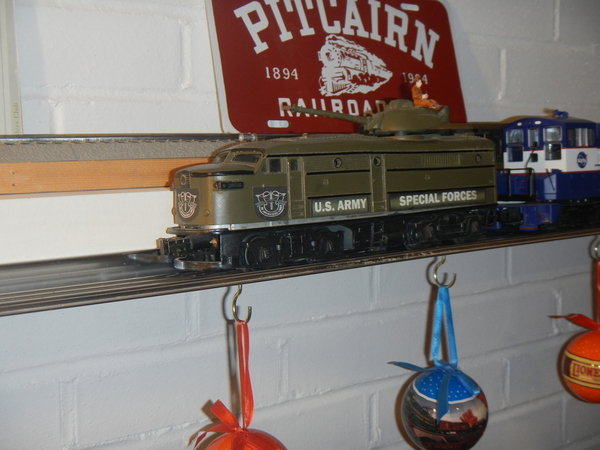Big Mike,
These men are giving you good advise, being that you are building new layout from the ground up like mine, I also recommend an over head shelf ceiling layout before you start not the ground level. Got to tell ya I enjoy my Train Room so much because of the over head ceiling layout.
Now I would run the Star Wiring, and use the 10 -13 Track join discipline for sure. It really does make for great DCS sign strength. Further I have found that the TIU portrays DCS signal nicely when the TIU's are mounted on the wall between the over head ceiling layout and the Ground layouts. Definitely use good quality 14 Gauge stranded wire. If you are running both DCS and Legacy run your Legacy connection on the out black channels of your TIU and also directly from the Legacy base to the opposite outside Track Rail from your TIU drops. This gives max Legacy signal also. I use MTH Terminal Blocks when running my 14 gauge stranded wire.
I also have 10 Amp Resettable breakers between all my Z4K/ ZW Transformers and my TIU's, they work perfectly. I also simply use the DCS TIU TVS to protect my layout, I have never had a problem running in this manner.
Mike setting up in this manner uses a lot of good 14 Gauge stranded wire, remember also I run FasTrack and use Command Control Switches, operated from my Legacy Cab2 HHRC, all my switches are wireless remote control, no AIU's in my layouts what so ever, this eliminates all switch wiring.
Have fun building buddy, still working on upgrading the old house for sale, busy as all get out right now. If you need more help drop me some e-mail and I will check in here as time permit!
PCRR/Dave
Mike I know full well I never need to tell you this, we always need to remember to pay our respects to the men who have provided our freedom - Memorial Day is this weekend. God bless our incredible Military men and ladies who have given their lives so we may all live free, in the Greatest Christian Country in the world.





